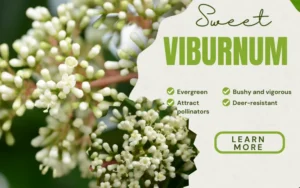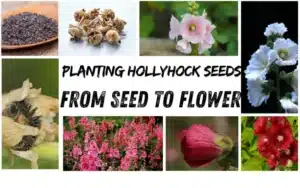I had to add a bunch of perlite to one of my raised beds because the soil was very heavy and clay-like. Perlite improved the aeration so my plants could breathe.
We’re talking about perlite, a soil amendment that can be a bit confusing. It sounds a lot like vermiculite, which has similar properties, but perlite is different in a big way. So, when should you use perlite, and when should you use other amendments like vermiculite? That’s what we’re going to cover.
- What is Perlite and Why Do We Care?
- Can I Put Perlite on Top of Soil? A Comprehensive Look
- When It’s a Good Idea to Use Perlite on Top of Soil
- When It’s Not a Good Idea to Use Perlite on Top of Soil
- Choosing the Right Perlite for Your Needs
- How to Apply Perlite on Top of Soil
- Tips for Using Perlite on Top of Soil
- FAQs: Can I Put Perlite on Top of Soil?
What is Perlite and Why Do We Care?
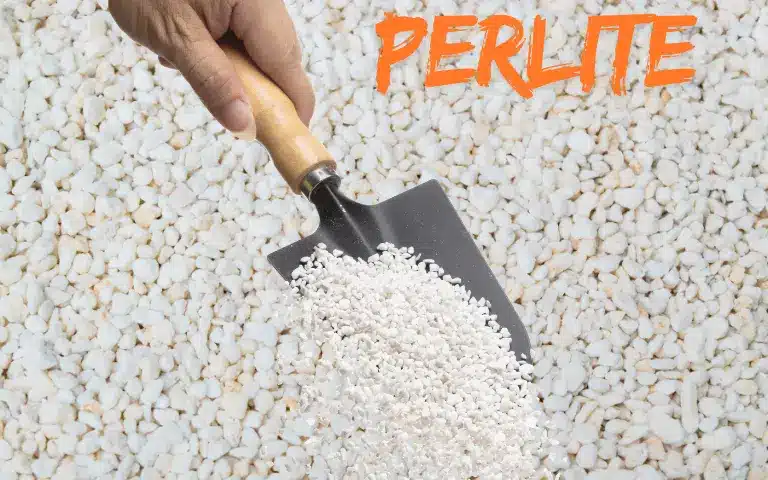
What is perlite?
It’s basically volcanic rock with a lot of moisture. This rock is heated to create tiny, white pieces, and the moisture inside makes it puff up like popcorn! If you look closely, it looks like white, fluffy popcorn. We have lots of it, and we’re not going to run out anytime soon.
Why use perlite?
- Perlite is very light, even lighter than peat moss or coconut coir when wet. It lets oxygen into your root zone, helping your plants breathe.
- It makes soil more stable, preventing compaction and promoting healthy roots.
- Perlite helps soil retain moisture, preventing drying out.
- Perlite blocks sunlight, keeping weeds away.
- It’s also cheap.
Perlite is an excellent choice for hydroponic arrangements, particularly when it comes to promoting the growth of cuttings. It works well in both deep water culture setups and NFT (Nutrient Film Technique) systems, but should not be used alone. Prior to placing your cutting in perlite, be sure to apply rooting hormone to it. Since perlite struggles to hold onto water, it’s important to keep the environment moist.
The downside of perlite
Perlite is good at letting air in, not water. Vermiculite is good at holding water. If you have water retention issues, perlite may not be the solution. Use vermiculite or other amendments to fix the problem.
Can I Put Perlite on Top of Soil? A Comprehensive Look
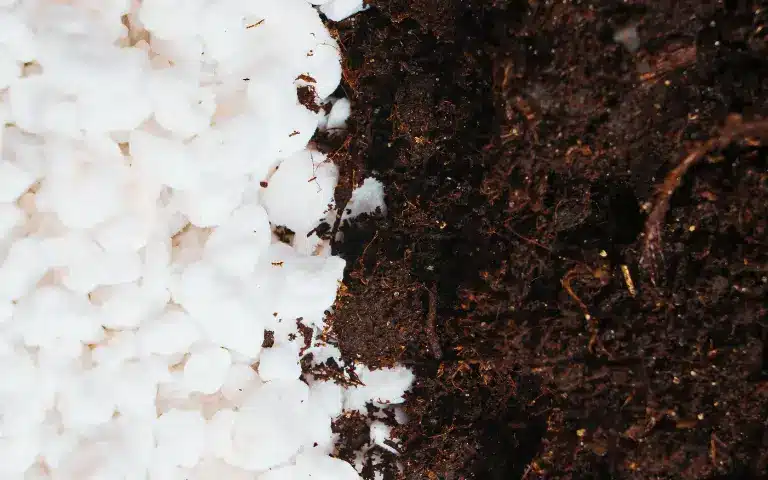
Yes, you can put perlite on the soil. However, it may not be the best choice.
Why it sometimes works:
- Beginning the growth journey of seeds: By sprinkling Perlite on top, it can aid in preserving moisture during the germination process.
- Shielding against soil erosion: A delicate covering can safeguard the soil from being washed away, particularly in containers.
- Hydration technique: Utilizing Perlite can establish a “mulch” impact, minimizing evaporation and extending the duration of soil moisture.
Why it’s a bad idea:
- Interference with microbial processes: The layer of perlite may disrupt the flow of vital nutrients to the plant roots and impede the activity of helpful microbes.
- Excessive watering: Incorporating perlite on top can exacerbate issues if you are already struggling with overwatering.
- Visual impact: It may alter the appearance of your planting space, as some individuals perceive the white perlite as visually disruptive.
Alternative methods:
- Enhancing your soil by blending in perlite allows for improved aeration and drainage, offering these advantages without the drawbacks of top-dressing.
- Opting for organic mulch such as composted bark, straw, or wood chips can deliver comparable benefits to using perlite while keeping your soil undisturbed.
When It’s a Good Idea to Use Perlite on Top of Soil
- Initiating seed growth: Enhancing your seed starting mix with a delicate layer of perlite can create an ideal setting for sprouting.
- Optimal drainage containers: Incorporating perlite in containers with proper drainage can safeguard against soil loss and maintain soil moisture.
- Shielding from soil loss: For outdoor containers or garden areas susceptible to strong winds or heavy rainfall, a fine layer of perlite can serve as a barrier against soil erosion.
When It’s Not a Good Idea to Use Perlite on Top of Soil
- Excess watering: When the soil is overly saturated, layering more perlite on top can exacerbate the issue.
- Plants with crowded roots: In cases where plants have outgrown their containers, it’s best to transfer them to a bigger pot instead of simply applying perlite on the surface.
- Delicate plants: Certain plant varieties, such as orchids, can be negatively affected by perlite and might not flourish if it is added on top of the soil.
Choosing the Right Perlite for Your Needs
- Particle size: Opt for a fine-grade perlite when top-dressing to ensure it integrates smoothly with the soil, as larger granules may cause disturbances on the surface.
- Quality: Seek out top-notch perlite from a well-known brand.
How to Apply Perlite on Top of Soil
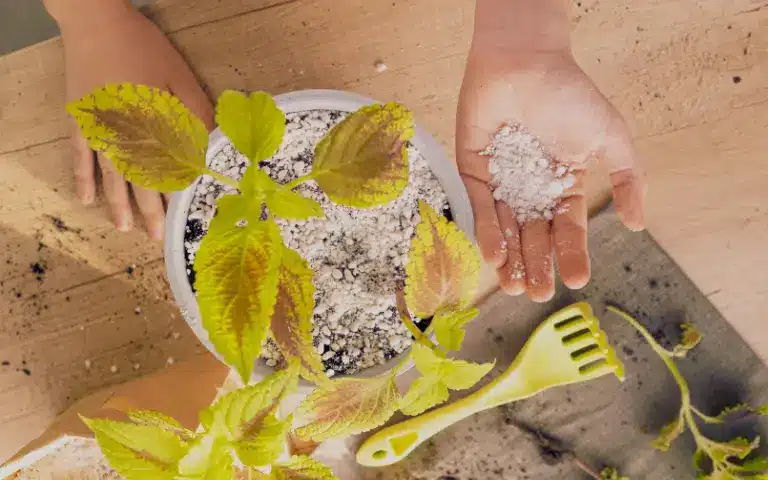
- Remove debris and weeds from the soil.
- Add a layer of perlite, about 1-2 inches thick.
- Gently rake the perlite into the soil.
- Water the area to settle the perlite.
Tips for Using Perlite on Top of Soil
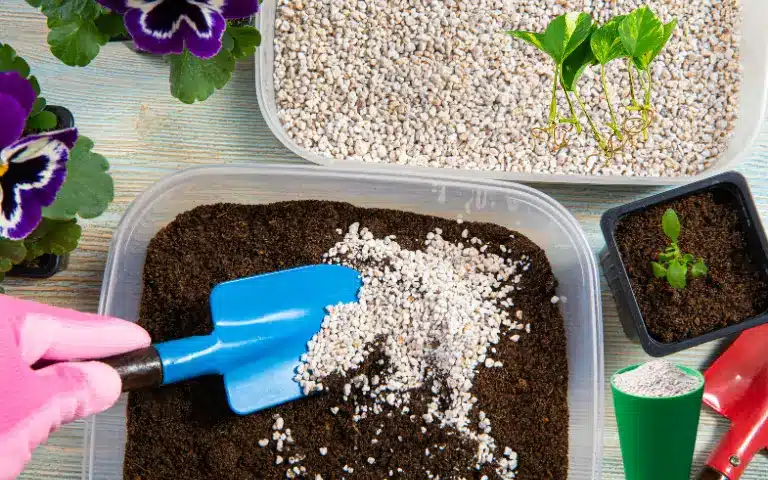
- Moisten perlite before handling: The perlite dust can be harmful when inhaled, so dampen it first.
- Apply a delicate coating: A delicate coating of perlite, roughly 1/4 to 1/2 inch thick, is commonly ample.
- Prevent smothering the flora: Ensure that the perlite does not suffocate the stems or foliage of your beloved plants.
- Handle with caution: When perlite sits atop the soil, it may impede water intake, thus requiring careful watering to prevent excessive moisture.
- Use perlite to cover seeds: It protects seeds and small seedlings from the elements but lets in light. One centimeter of perlite in soil protects seeds and small seedlings from the sun and heat while letting in light. It makes the soil more even in temperature and keeps it moist.
- The best soil mix is 80% normal soil and 20% perlite. Mixing these gives you the perfect balance. If your plant needs to dry out between waterings, add more perlite. Add around 30% to 40% instead of 20% to let more oxygen reach the roots and dry out the soil faster.
- Use a garden rake to create an even layer.
That’s perlite in a nutshell! It’s a lightweight, cheap amendment that is great for improving aeration in your soil or your hydroponic systems. You can find it at almost any garden or hydroponics store in different sizes.
Adding perlite to soil can help, but it’s not always the best option. Think about the pros and cons to see if it’s right for your plants. Do you add perlite to your soil? Tell us about your experiences! Please share your ideas in the section below!
FAQs: Can I Put Perlite on Top of Soil?
Can I put perlite on top of soil for all plants?
Adding perlite to soil isn’t always best for all plants. It can disrupt microbes and affect water retention. Use it selectively, like when starting seeds or when your soil needs improved aeration.
How much perlite should I put on top of soil?
1/4 to 1/2 inch, is usually sufficient. Avoid covering the stems or leaves of your plants.
Can I put perlite on top of my vegetable garden soil?
Adding perlite to your vegetable garden soil can help with aeration, but it’s not usually recommended as a top dressing. It can disrupt the soil’s ecosystem and affect nutrients.
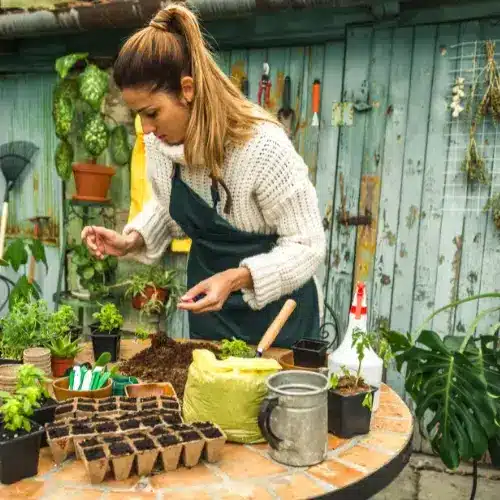
About the Author
With over a decade of hands-on experience in home garden care, I’ve cultivated a deep-rooted passion for nurturing indoor greenery.


